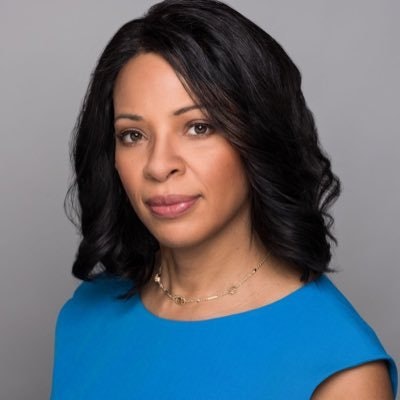 Dr. Linda Garcia
Dr. Linda Garcia
So, six months later, CCCSE followed up with 120,833 students across 273 colleges. Dr. Linda Garcia, executive director of the center, said she hoped to see the needle move to indicate more familiarity with the help available. The percent of those unfamiliar went down to 49.
“Is that progress? Yes," said Garcia. "Is it enough? No.”
The results, and other findings in this latest survey, underlines the continuing impact of COVID-19 on higher education and its disproportionate affects on students of color. Garcia said the results are a signal that colleges and universities have more work to do to help their students gain access to the resources they need and overcome the burdens the pandemic continues to create.
Over one third of students surveyed (34%) responded that their personal financial situations were worse than before the pandemic, a four-percentage point increase from the fall 2020 survey. Just under one quarter said they were struggling to pay for college as a direct result of COVID. Disaggregating that data shows that Asian, Native American, Black, and Latinx students were more likely to have financial difficulties than their white counterparts.
Colleges across the country have employed federal relief funds to aid students, from accessing hot spots in areas without broadband to covering outstanding loans, allowing students to continue their educational journey. But if students don’t know about these resources, then no one will access them.
“I believe colleges are doing everything they can do to communicate, but how are we communicating and [at what] frequency?” said Garcia. “The students are trying to soak the info in, they’re thinking about a million things. It’s about putting the support information in front of them.”
Dr. Monica Parrish Trent, vice president for network engagement at Achieving the Dream, said that even before COVID, emails were not the best way to communicate with students.
“[Email] is not what students use, but it’s the system that’s easiest to execute on a community college campus.”
The most successful way to communicate, said Trent, is by picking up the phone. Those community colleges that saw an increase in enrollment during the pandemic did so, said Trent, because they reached out and connected with their students one by one.
 Dr. Monica Parrish Trent
Dr. Monica Parrish Trent
“It takes a lot more manpower,” she said, ”It’s a deep commitment, but it works.”
Another successful technique involves faculty relay. Most students, said Garcia, interact with faculty, so it’s important to equip them with information they can share.
The survey results, said Garcia, “are conversation starters. How are we engaging with students about how they’re feeling? How do we seek feedback regarding those concerns and other COVID precautions on campus? Does that impact their emotional wellbeing, are we proving support?”
It’s important, Garcia said, to remain flexible, not just in ways to connect with students, but also in scheduling.
“Students may want to take classes online rather than face to face, or wanting half and half, remaining flexible with advising doing it through zoom or having students come to campus,” she said.
Flexibility impacts the feeling of safety. Most of the students polled (59%) said they actively avoid situations on campus where social distancing of at least six feet was not guaranteed. Of that 59%, the majority were students whose communities experienced higher COVID mortality rates, women, and older students.
“Our students are traumatized by the loss of stability. Many suffered the loss of employment and caregivers,” said Trent. “The stress of, how do I keep myself healthy, employed, and try to advance myself in my studies? The mental health impact has been significant. It’s been incredibly stressful for our students.”
When students know about the resources available to them, “they’re so grateful,” said Garcia. “Students [tell us] they’ve lost their jobs, that they’re trying to live paycheck to paycheck; they’re so relieved that colleges are providing that support.”
“Every student who comes to community college comes to be successful, they don’t come to fail,” said Garcia. “We have to help every student get to the finish line of meeting that goal. That’s why it’s so important to work collaboratively. Every person who works at the campus has a role to play to make sure students get to the finish line.”
Liann Herder can be reached at [email protected].
















